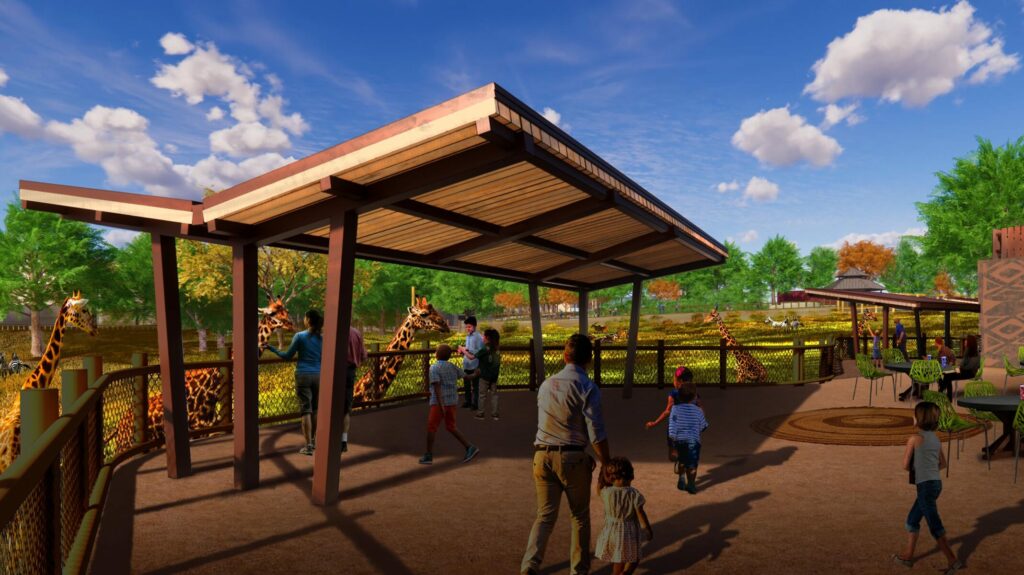PGAV Destinations is working with the Oklahoma City Zoo on Expedition Africa — the largest habitat expansion project to date in its 120-year history. Phase one of the African savannah region is underway on 14 acres in the heart of the zoo, creating a welcoming entry with an overlook of the new spacious savannah. The $25 million project is the culmination of years of planning and is scheduled to open Spring 2023.
This space will provide an expanded and more immersive habitat for giraffe, eland, okapi, ostrich, painted dog, cheetah, red river hog and lemur, among several other species native to Africa. Expedition Africa features a new giraffe barn that will offer indoor viewing areas year-round. An existing pachyderm habitat building, a historical and architectural treasure at the zoo, will be renovated into a multipurpose event space, small animal habitat area, and children’s play zone, all overlooking the savanna.
“Less than one tenth of 1 percent of all Americans will ever visit the African continent,” said Dr. Dwight Lawson, executive director/CEO for Oklahoma City Zoo and Botanical Garden. “Expedition Africa is designed to immerse visitors into a space where guests can connect with the wildlife of Africa in an unforgettable way and be inspired to help them thrive.”
The transformation of the pachyderm building — architecturally the most expressive mid-century modern style construction at the zoo — has been an endeavor to preserve the iconic structure. Dexter Hansen, PGAV Destinations Architectural Designer, remarked: “Repurposing this historic building from a home for elephants and rhinos to a guest event space along with giraffe feeding, savannah viewing, small animal exhibits, and children’s play zone has kept the team creatively challenged. The design reimagines the spaces while retaining the features that will be nostalgic for long-time zoo goers.”
On the site, the design team worked to reuse and repurpose as much as possible, from the existing grades to site features. It was important to the zoo to keep as many of the trees as possible, many of which are historical and award-winning. The site design minimizes tree removal, works outside of the tree canopies, and requires extensive tree protection to help in their survival. For any trees that had to be removed, the trunks and limbs will be placed in habitats as climbing structures and environmental enrichment devices for the animals.

